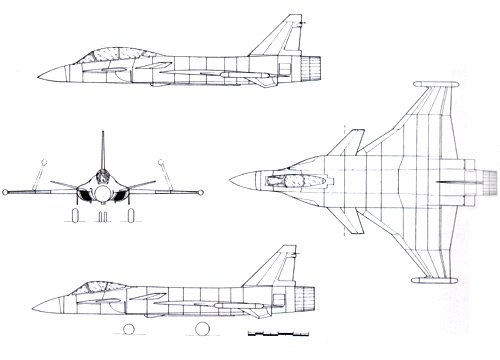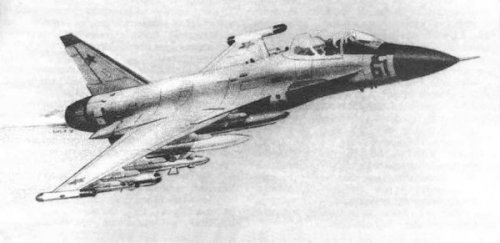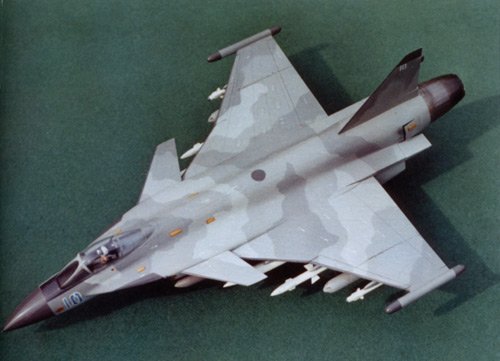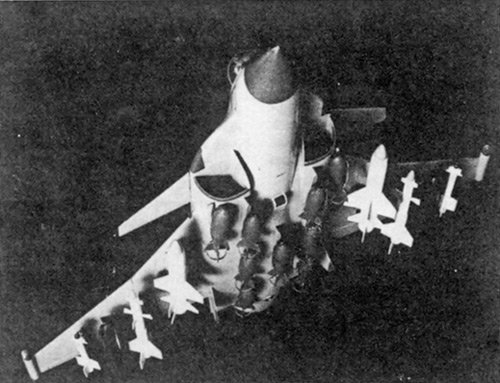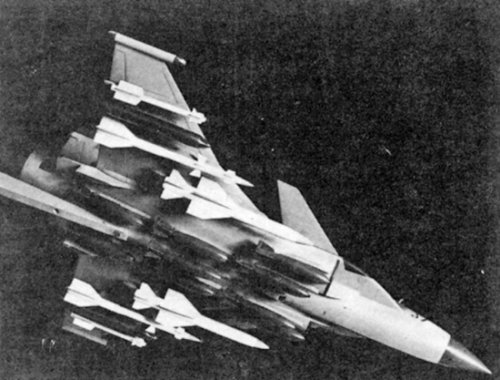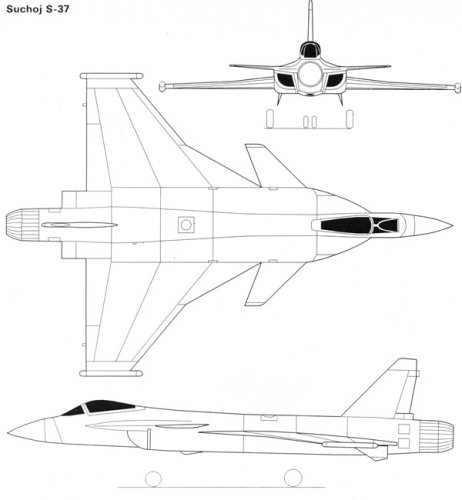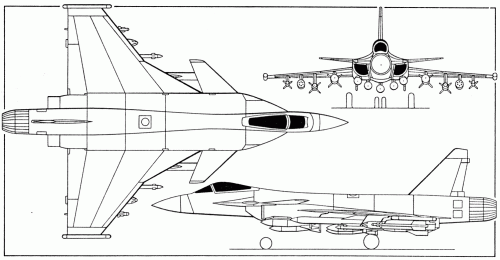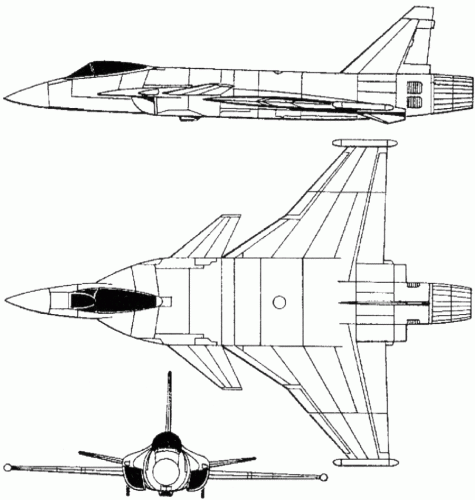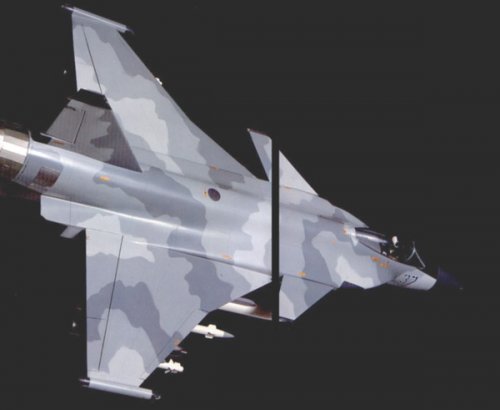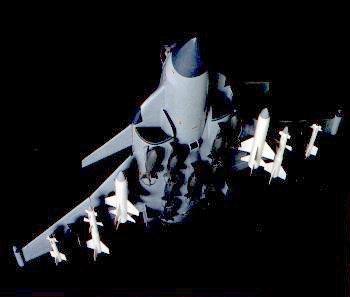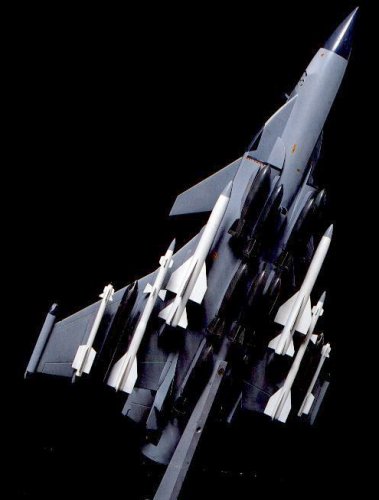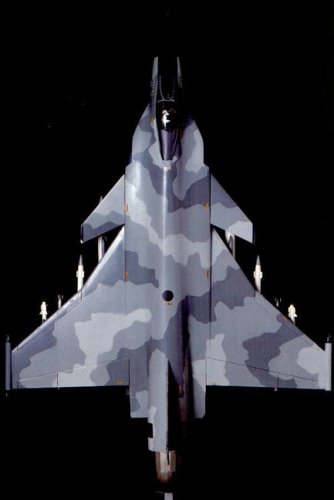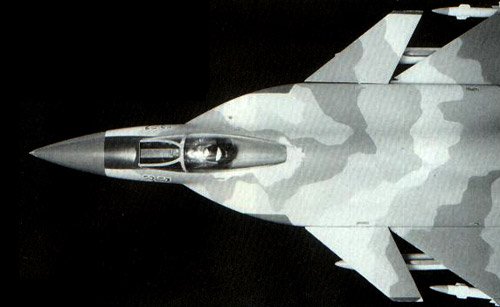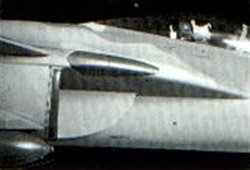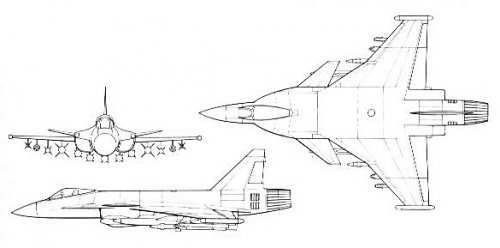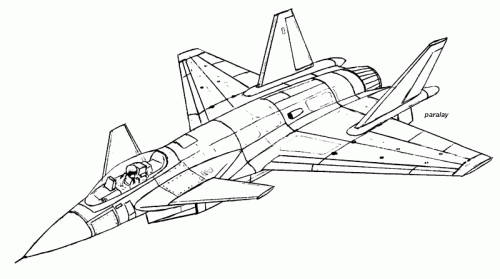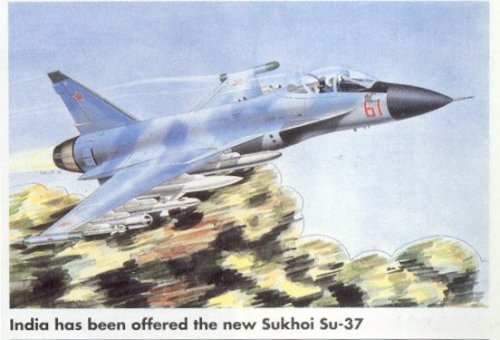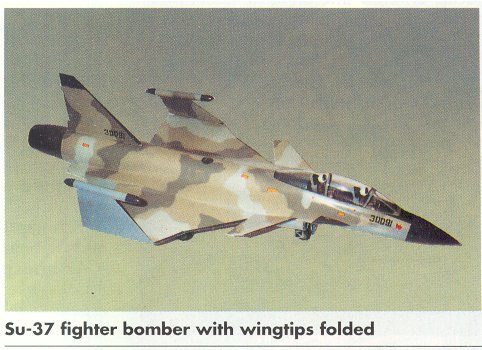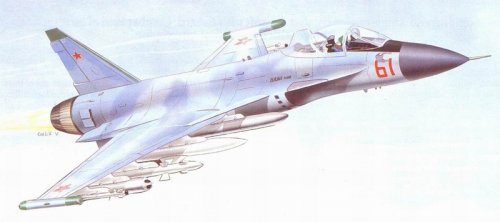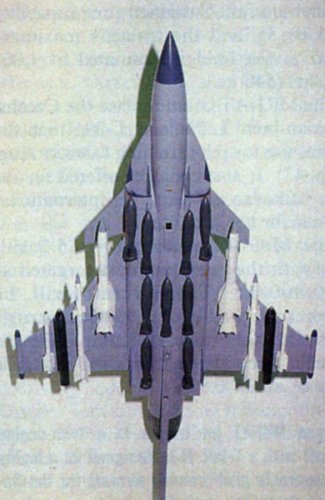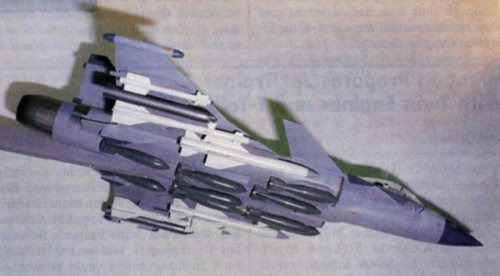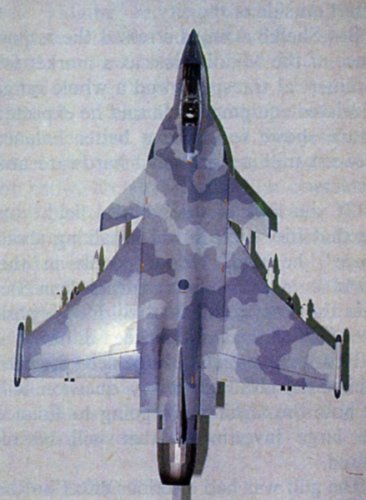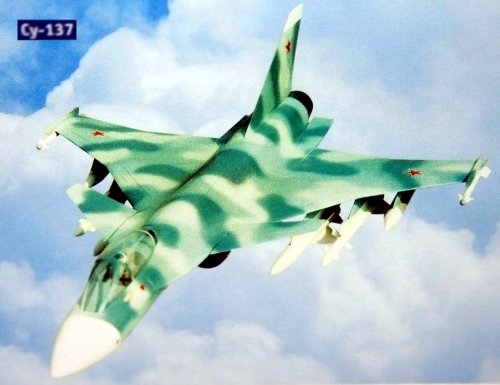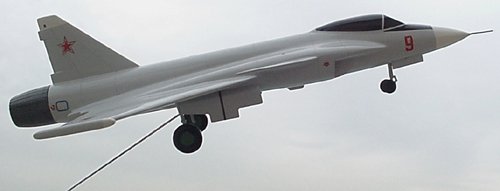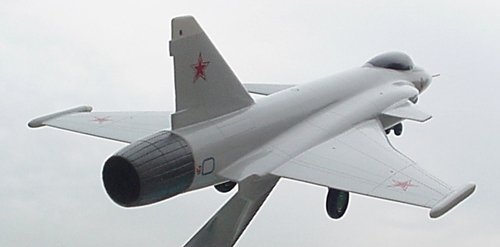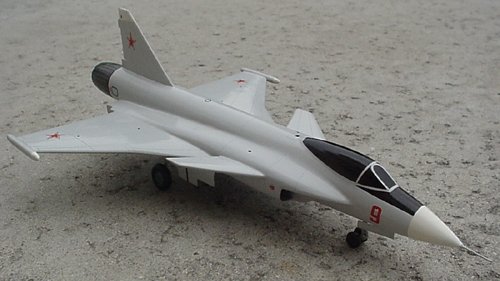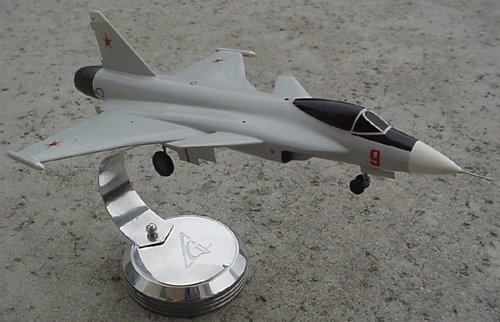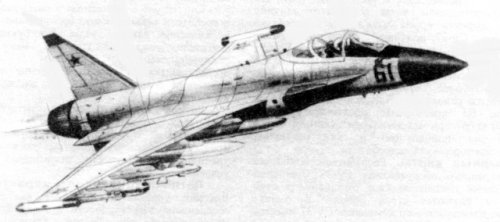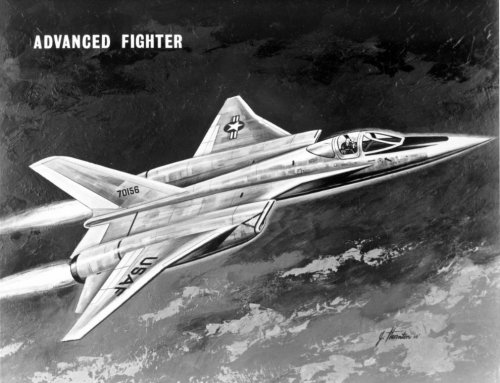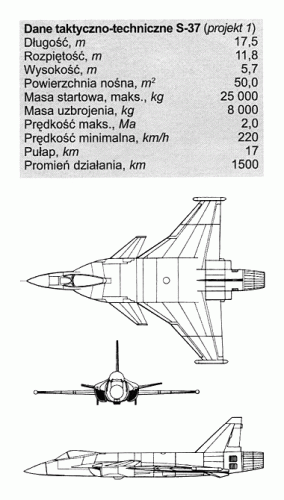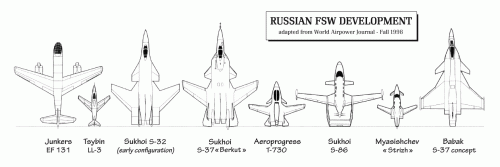- Joined
- 27 December 2005
- Messages
- 17,768
- Reaction score
- 26,582
A resolution was passed by the Communist Party in 1989 tasking Sukhoi with developing a conceptual design of a multirole fighter-bomber.The S-37 was a single engine canard delta (single and twin seat versions were studied) designed to replace the Su-7/-17, Su-25, MiG-21, MiG-23 and MiG-27 aircraft in VVS service and for export to friendly nations. The latest "AirLand Operation" doctrine called for CAS (Close Air Support) as deep as 150km beyond the front lines. The task for the S-37 was to destroy surface static and mobile targets, air defence systems, perform reconnaissance missions, plus destruction of enemy aircraft and helicopters.
Chief designer on the project was Vladimir Babak, and operational experiences with the Su-17 and Su-25 in Afghanistan were taken on board in the design. To reduce the time and costs of designing and producing the S-37, it was planned to use existing systems, or those already under development for other new aircraft. A fly-by-wire control system allowed relaxed static stability.
The avionics suite included a multimode radar (possibly based on N010 Zhuk) and an underfuselage optronic system (resembling the SU-24M's Kaira), with a built in "Pastel" RWR for warning and ARM targeting and ECM pods on the wingtips (Sorbstiya). The initial design used the R-79 engine, already used on the Yak-41M, with the thrust vectoring nozzle removed, possibly to be replaced by AL-41F later on.
Up to 800kg of armour was included to protect the pilot, engine and other critical airframe components. 17 hardpoints (9 underfuselage and 8 under the wings) allowed carriage of a the whole spectrum of available weapons. According to Yefim Gordon a single GSh-30 cannon was mounted in the starboard wing root, but this isn't clearly visible on the display models.
Wings had folds to reduce ground footprint.
Unfortunately, the collapse of the Soviet Union brought funding to a halt. Sukhoi had touted the project in 1991 to foreign countries, looking for a partner to invest the money needed, but were unsuccessful. The new Russian airforce were also unhappy with the single engine design. Babak's team worked for some time on a new project "237" modified to use twin engines, the status of which is currently unknown.
S-37 Project
Length: 17.65m (Bedretdinov), 17.5m (Butowski)
Wingspan: 12.08m (Bedretdinov), 11.8m (Butowski) (8.64m folded)
Wing Area: 50 sq m
Height: 5.74m
Maximum speed: 1500km/h at low level, Mach 2.0 at height
Maximum altitude: 17000m
Range, 3000kg payload: 800km (low level) 1,500km (high level)
G load: +9/-3g
Supersonic G load: 8g
Acceleration from 600km/h to 1100km/h at 1000m altitude: 14 secs
Acceleration from 1100km/h to 1300km/h at 1000m altitude: 7.2 secs
Engine: 1 x R-79M turbofan
Thrust: 18,143kg
Weight, Maximum: 24,970kg
Weight, Normal takeoff: 16-18,000kg
Weight, empty: 12000kg
Internal fuel capacity: 8,300kg
Normal combat payload: 5000kg
Maximum combat payload: 8000kg
Sources
Chief designer on the project was Vladimir Babak, and operational experiences with the Su-17 and Su-25 in Afghanistan were taken on board in the design. To reduce the time and costs of designing and producing the S-37, it was planned to use existing systems, or those already under development for other new aircraft. A fly-by-wire control system allowed relaxed static stability.
The avionics suite included a multimode radar (possibly based on N010 Zhuk) and an underfuselage optronic system (resembling the SU-24M's Kaira), with a built in "Pastel" RWR for warning and ARM targeting and ECM pods on the wingtips (Sorbstiya). The initial design used the R-79 engine, already used on the Yak-41M, with the thrust vectoring nozzle removed, possibly to be replaced by AL-41F later on.
Up to 800kg of armour was included to protect the pilot, engine and other critical airframe components. 17 hardpoints (9 underfuselage and 8 under the wings) allowed carriage of a the whole spectrum of available weapons. According to Yefim Gordon a single GSh-30 cannon was mounted in the starboard wing root, but this isn't clearly visible on the display models.
Wings had folds to reduce ground footprint.
Unfortunately, the collapse of the Soviet Union brought funding to a halt. Sukhoi had touted the project in 1991 to foreign countries, looking for a partner to invest the money needed, but were unsuccessful. The new Russian airforce were also unhappy with the single engine design. Babak's team worked for some time on a new project "237" modified to use twin engines, the status of which is currently unknown.
S-37 Project
Length: 17.65m (Bedretdinov), 17.5m (Butowski)
Wingspan: 12.08m (Bedretdinov), 11.8m (Butowski) (8.64m folded)
Wing Area: 50 sq m
Height: 5.74m
Maximum speed: 1500km/h at low level, Mach 2.0 at height
Maximum altitude: 17000m
Range, 3000kg payload: 800km (low level) 1,500km (high level)
G load: +9/-3g
Supersonic G load: 8g
Acceleration from 600km/h to 1100km/h at 1000m altitude: 14 secs
Acceleration from 1100km/h to 1300km/h at 1000m altitude: 7.2 secs
Engine: 1 x R-79M turbofan
Thrust: 18,143kg
Weight, Maximum: 24,970kg
Weight, Normal takeoff: 16-18,000kg
Weight, empty: 12000kg
Internal fuel capacity: 8,300kg
Normal combat payload: 5000kg
Maximum combat payload: 8000kg
Sources
- Piotr Butowski Lotnictwo Wojskowe Rosji Tom 1, Lampart, 1995
- Ildar Bedretdinov The Attack Aircraft Su-25 and its derivatives, B & Co, 2002
- Tony Buttler & Yefim Gordon Soviet Secret Projects: Fighters since 1945 Midland Counties, 2005

